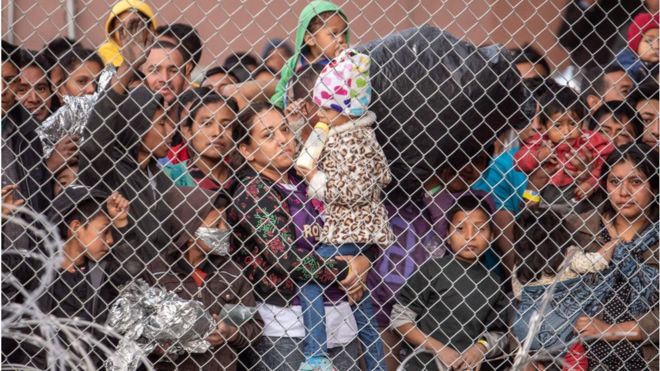
Since his election, Donald Trump has been trying to circumvent the Flores agreement that sets the maximum detention of migrant children at 20 days.
It is a new power struggle between the White House and American justice. The Trump administration announced on Aug. 21 that it is planning to remove the strict limit on the amount of time migrant children can be held in immigration detention centers, in order to allow unlimited detention of families immigrating to the U.S. illegally.
By doing so, the Department of Homeland Security would invalidate a court agreement from 1997, called the Flores agreement. This agreement bars federal authorities from detaining children for more than 20 days. Donald Trump has been working to circumvent this restriction since he was elected president, as part of his zero-tolerance immigration policy.
’Send a Powerful Message’
Under this new legislation, the American government would be able to detain families that entered the U.S. illegally for as long as it takes for their applications to be processed. On Tuesday, a spokesperson for the Department of Homeland Security told the media including The New York Times, that “the regulation would send a powerful message that bringing children to the United States [is] not ‘a passport’ to being released from detention.”
The DHS maintains that the average wait time under this regulation would be three months. But human rights organizations are worried the detention will be much longer than that, and that detainees will be held in structures that are in poor condition or ill-suited for the care of young children.
Indeed, according to numerous investigations carried out these last months, the prison conditions are unsafe for minor. There are overpopulated cells, and sometimes there is no access to showers, toothpaste or hot meals. The Associated Press reported that the immigration detention center in Clint, Texas, officially designed to accommodate 105 children, was holding 676 children on June 1.
Physical and Emotional Suffering
The 20-day limit on detention was established in 2015 to support the 1997 regulation, following a large class action lawsuit that exposed the physical and emotional pain suffered by children held in detention for an extended time. The White House decision is likely to be fiercely challenged again in court. The government announced that officially, the new measure will take effect 60 days after it is published in the Federal Register, which is planned for this week.
But according to the 1997 agreement, the measure must first be approved by the judge who handed down the decision. That judge is Dolly M. Gee, of the federal District Court of Central California. The government now has seven days to send Gee the proposed change in detention policy for her approval. If the judge denies the government’s request to change the policy, the Trump administration may file an appeal, which could push back enactment of the decision by months or even years.
Last summer, Trump tried to circumvent the Flores agreement, when he decided to separate children and parents arrested for entering the country illegally in order to detain parents longer than 20 days. More than 2,900 children were detained. This measure, accompanied by pictures of children ripped from their parents’ arms, caused such an uproar that the American president backed down. A judge then decided that children cannot be separated from their families.

Leave a Reply
You must be logged in to post a comment.